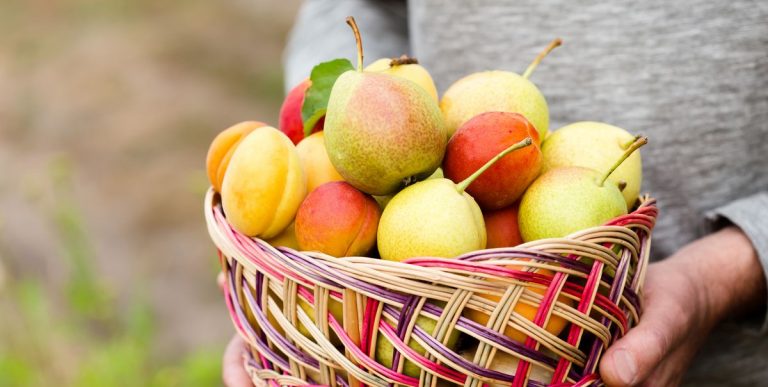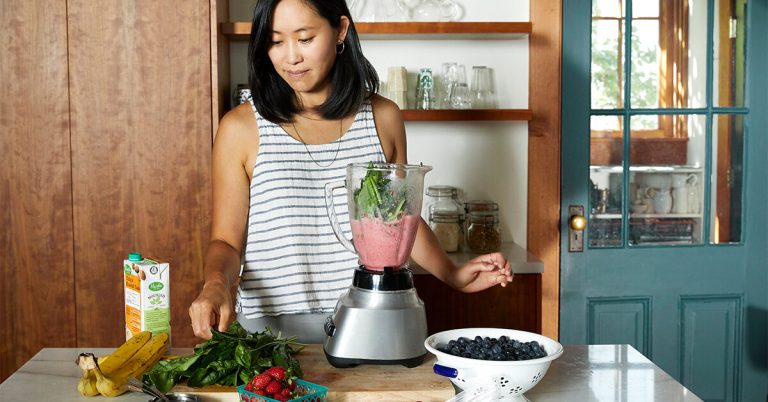If you want to improve your cardio without clocking endless 5K runs, then you’ve come to the right place. This three-part cardio workout plan uses three different environments — home, outdoors and the gym — to progress your fitness in six short weeks, progressing from bodyweight movements to tried-and-tasted fat-burners forged in the irons of functional fitness.
The first section, to be repped out at home, will power up your metabolism and start whittling away at your fat stores with a quickfire fitness plan you can run through in your living room with just your bodyweight– no kit required.
Next up, head outdoors to give your well-trodden stamina sessions a breath of fresh air. These outdoor moves will build strength as well as speed, for a more defined, athletic physique.
Lastly, our final, high-intensity exercises will push you to your limit, elevating your power and endurance. The clock starts now.
Photography: Philip Haynes | Model: Christopher Whitlow at Andi Peters’ Models | Grooming: Megan Koriat | Styling: Abena Ofei
Weeks 1 and 2: The Burn Begins at Home
Your Personal Trainer: James Stirling
Stirling rules Instagram when it comes to workouts that you can do from home. Follow him to get your fitness off to a flying start
You don’t need much space or kit if you’re serious about getting fit and lean. The first two-week phase of this plan will quickly build up your strength and endurance in very familiar surroundings – your living room, say, or your garage. You won’t need any equipment at all. Simply clear yourself a bit of space and ensure you have enough headroom for burpees.
A yoga mat might come in handy, too, unless you want to sweat all over your floor.These workouts will increase your cardiovascular fitness with dynamic movements that ramp up your heartrate and tax your lungs for a hefty calorie burn.
The unilateral – one-sided – exercises will improve your running strength, while the focus on your core will fix your posture and bulletproof you against injury. Oh, and carve out a six-pack, too.
Perform these three workouts in order, with at least a day off between each one. You want to be able to go all out on every rep of every set, so make sure you’re resting and recovering to come in at 100%.
The hardest part is getting started. So just start. The rest will take care of itself.
Home Workout #1: Prime Your Muscles
Time: 20 Minutes | Level: Easy | Benefits: Fat-Loss, Muscle-Gain
If you want to thrive in the tougher cardio sessions to come, lay thefoundations of strength – and burn some fat to boot. This workout splits six moves into upper- and lower-body tri-sets. Complete three times each. Now get to it.
Tri-sets: Three moves performed back to back. You’ll save time, turbocharge your fitness and spike your metabolism

1A: Squat Jumps, 15 Reps, No Rest
Adding a jump flips your squats from strength-builders into a fat-burning cardio exercise. Squat with your back straight until your thighs are parallel with the floor and your glutes are level with your knees (A), then spring up (B). Cushion your landing and go straight into the next rep.

1B: Squat Jacks, 20 Reps, No Rest
The jack variation is simple, but executed at a furious pace. You’ll cut through fat and learn to stay light on your feet. Sit into the bottom of a wide squat (A). As fast as you can, bring your feet together (B), then immediately back out again. Expect to really feel it when you’ve completed the 20 reps.

1C: Crab Walks, 30 Sec, 30 Sec Rest
This is no stroll on the beach. Crab walks push your muscles to the limit as you fight to keep your balance. With your hands behind your back and your legs bent in front of you, lift your hips (A) and shuffle forward (B). After half a minute, take a 30-second rest, before round two of squat jumps

2A: Explosive Press-Up, 10 Reps, No Rest
This dynamic upgrade on the bodyweight staple will leave your heart pumping. From a press-up position, lower your chest until it almost touches the floor (A). Then, as you push up, lift both of your hands off the ground (B), before going straight into rep two. If you can clap your hands in mid-air, even better.

2B: Shadow Box, 30 Sec, No Rest
You don’t need to step into the ring to train for the fitness levels of a champ. To shadow box, adopt a fighting stance. Stay light on your toes as you dip and sway (A), while throwing jabs and hooks with both arms (B). Work on any punches you feel like – just make sure you’re giving it your all.

2C: Inchworm: 10 Reps, 30 Sec Rest
From a standing position, lower your torso. Keep your legs straight and walk forward on your hands (A), until you’re in a press-up position (B). Reverse the movement and return to the starting position. That’s one rep. Rest for 30 seconds before you begin another round of the explosive press-ups.
Home Workout #2: Carve Out Better Form
Time: 20 Minutes | Level: Medium | Benefits: Fat-Loss, Speed
Your posture is the first thing that gives way during energy-sapping cardio. Strengthen your
core with Tabata intervals. The short rest and full-throttle work will also help you increase your speed. It’s time to tighten up
Tabata: The toughtest four-minute workout you’ll ever do. Follow 20sec of maximum effort with 10sec of rest. Repeat eight times.

1. Alternate Jump Lunge, 20 Sec on, 10 Sec Off, 8 Rounds
Unilateral moves that work one limb at a time require your core to hold your body upright. From a standing position, lunge forward until your rear knee almost touches the ground (A). Jump up, bringing your rear foot forward and the front foot back (B). Land in a lunge and repeat.

2. Squat to Half Burpee: 20 Sec On, 10 Sec Off, 8 Rounds
Prepare yourself for the demands of steady-state cardio by sustaining a high intensity here. With your feet shoulder-width apart, bend your knees and drop into a squat (A). Place your hands on the floor and shoot your legs back to form a plank (B). Jump back up to a standing position. That’s one rep.

3. Shoulder Tap: 20 Sec On, 10 Sec Off, 8 Rounds
Prepare yourself for the demands of steady-state cardio by sustaining a high intensity here. With your feet shoulder-width apart, bend your knees and drop into a squat (A). Place your hands on the floor and shoot your legs back to form a plank (B). Jump back up to a standing position. That’s one rep.
Home Workout #3: Enhance Your Stability
Time: 15 Minutes | Level: Easy | Benefits: Fat-Loss, Stamina
Cardio training such as running and climbing requires you to work one side of your body at a time, making balance vital. Our descending ladder will make you wobble – but it’ll teach you to stay in control when the intensity cranks up
Descending ladder: Reducing the reps by one each round until you’re down to one rep. Here, you’ll start at 10 and rest after each round.

1. Star Jumps: 10 Reps Down to 1
In a squatting position, bring your feet and hands together so that your fingers touch the floor (A). Now jump back up explosively, extending your arms and feet out to the side (B). Repeat this movement as quickly as possible to elevate your heart rate right from the start.

2. Diagonal Climber: 10 Reps Down to 1
Position yourself as though you were in the blocks before a race, with one foot beneath your waist and the other behind you. With your back leg straight (A), explosively swap foot positions, bringing your right knee to your left elbow. Repeat on the opposite side as fast as you can (B). This will truly test your balance.

3. Side Skater: 10 Reps Down to 1
Moving laterally gives you greater stability, speed and strength, helping you with any cardio activity. Start with your weight on your left leg, slightly bent (A). Take a big jump and land on your other leg (B). Your left leg should finish bent behind your right leg. Bound off your landing leg to move back into the starting position.

4. Plank Jack: 10 Reps Down to 1
Adopt the standard plank position, holding your body up on your hands and toes (A). Hop your legs to the sides, as in a jumping jack (B), then hop them back to the centre. That’s one rep. When you’ve completed 10 reps, rest before going back to star jumps for nine reps. Don’t rush now, or you’ll burn yourself out.
Weeks 3 and 4: Push Your Limits Outside
Your Personal Trainer: Jonny Jacobs
The adventure athlete Jacobs clocked up 1800 miles of running, cycling and swimming last year. So he knows his stuff.
With your muscular endurance newly enhanced, now is the time to take your training out into the open and really push to burn even more calories.
Head to the park or into your garden – all you need is somewhere to do a few pull-ups and a skipping rope.The workouts in this phase use different session structures to keep your muscles guessing and are a world away from the boredom of simply running three days a week, swapping plodding around the neighbourhood for smarter training that unlocks the potential of our entire body.
As before perform these three workouts in order, with at least a day off between each one. Which, of course, let’s you work around the inevitably inclement weather. Go hard, go home and get fitter and leaner than ever. If you get a tiny bit of vitamin D in the process, all the better.
Outdoor Workout #1: Run Faster, For Longer
Time: 25 Minutes | Level: Medium | Benefits: Willpower, Speed
A quicker, fitter body is built on more than just endless laps. Break up your efforts into
interval sprints to increase your aerobic capacity and sustain a good pace when the miles clock up. Take a deep breath, now
Aerobic Capacity: A measure of your heart’s and lungs’ ability to consume oxygen – important when you want to improve your stamina.

1A: Run 250m, 10 Rounds
Sprint 250m, then perform a burpee (below). Run the same distance again, but this time follow it with two burpees – and so on, for 10 rounds. To maintain motivation, try to match the time it took to run your first 250m in every subsequent round. Remember to pump your arms (A) and lift your knees high (B).

1B: Chest to Floor Burpees: 1 up to 10
Follow each sprint with a set of burpees, as described above. In your final round, run 250m, then perform 10 chest-to-floor burpees. Squat and place your hands on the floor, then kick your feet back and lower your chest as much as you can (A). Press up and jump with your hands behind your head (B). Rest for no more than 30 seconds.
Outdoor Workout #2: Maximum Effort, Minimum Time
Time: 20 Minutes | Level: Hard | Benefits: Muscle, Willpower
Building strength in your arms, back and chest will increase your efficiency to help you conserve energy during cardio. Find a pull-up bar in the park and set your timer for this 20-minute AMRAP. It’s you against the clock
AMRAP: This means ‘as many rounds as possible’. Useful for measuring your improvement over time as you try to beat your score.

1. Pull-Ups, 5 Reps, AMRAP
A strong back will help your posture during cardio. Grab an overhead bar with your palms facing away from you and your arms extended (A). Squeeze your shoulder blades together, exhale and drive your elbows towards your hips to bring your chin above the bar (B). Complete your reps, then move on.

2. Press-Up 5 Reps, AMRAP
First, support your weight on your toes and palms, making sure that your hands are beneath your shoulders. Keep your core locked: make a straight line from your head to your glutes and heels (A). Slowly lower your body until your chest is an inch from the ground (B), then power yourself up. Get ready to run.

3. Sprint: 50m, AMRAP
Remember: this isn’t a jog. If you want to build up your speed and endurance over longer distances, you need to improve your sprint pace. Try pushing off from your toes (A), not your heels, to propel each foot forward (B) and keep your feet flexed up towards your shins. Give it everything you’ve got and the 50m will be over in a flash.

4. Chest-to-Floor Burpee: 5 Reps, AMRAP
Squat until your thighs are parallel with the floor and place your palms down. Kick your feet back, then lower your chest to touch the floor (A). Press your body off the floor, jump your feet towards your hands, and leap up with your hands behind your head (B). Go straight into the next rep.

5. Sprint, 50m, AMRAP
Your sprints aren’t over just yet. By this point, your technique might be dropping, but remember to drive your arms through (A) and ensure your knees go high (B). After this, you’ve completed one round. See how many you can blast through in 20 minutes – and try to beat it next time.
Outdoor Workout #3: Extend Your Staying Power
Time: 20 Minutes | Level: Medium | Benefits: Stamina, Muscle
Bouncing with a rope might look simple, but it’ll reveal your true aerobic ability. This circuit also incorporates strength moves for a complete conditioning session guaranteed to build you a bigger engine. Work for the rest
Work:Rest Ratio: The time it takes to complete a round dictates how long you rest. In this case, your rest is equal to your work times.

1. Skipping: 50 Reps, 5 Rounds
Grab your rope at both ends and get ready to cut excess fat while strengthening your lungs. use your wrists to flick the rope round your body (A), jumping to clear it as it hits the ground (B). Stay light and cushion your landing with your knees slightly bent. On to the squats.

2. Air Squat: 20 Reps, 5 Rounds
There’s no extra weight, but the sheer number of reps will be enough of a challenge. Stand with your feet shoulder-width apart (A), bend your knees and squat (B). Go down as far as you can, then reverse the motion until you’re back in the starting position. Keep your head up and your back straight throughout the move. Press-ups next.

3. Pike Press-Up: 10 Reps, 5 Rounds
Give your legs a break and focus on your arms and shoulders. From a regular press-up position, walk your hands in so your body forms an upside-down V-shape (A). Next, bend your elbows until the top of your head nearly touches the floor (B). Hold this position for one second before pushing back up. Now get crawling.

4. Iguana Crawl: 20m, 5 Rounds
Stay on all fours and start crawling for a move that will elevate your heart rate. With your hands slightly in front of your shoulders, bring your knees off the ground and travel five steps forward, reaching with your right arm as you lift your right leg (A). Repeat on your left side (B). Check the timer, take your rest, then go again.
Weeks 5 and 6: Take Your Fitness To a New Level
Your Personal Trainer: Steven Fawcett
CrossFit Games athlete Fawcett understands how tough cardio can be. His three workouts aim to help you achieve aerobic training prowess.
Time to explode. Now you’ve established your base of strength, improved your lung capacity and reinforced your mental toughness, you are ready to tackle our third phase. These are best done in a gym but you don’t need much equipment, so you’ll be in and out quickly and safely.
The three intense cardiovascular challenges in this part of the plan borrow the protocols and intensity of CrossFit for full-body hits that will turbo-charge your metabolism. CrossFitters tend to be in good shape, after all.
You know the score by now: perform the three workouts in order with at least a day off in between each one. If you’re working hard enough, you should need a break before the next session, to be honest. Complete this level, though, and you’ll emerge with better aerobic fitness, extended stamina and the knowledge of your true capabilities.
Gym Workout #1: Stamina You Can Rely On
Time: 21 Minutes | Level: Hard | Benefits: Fat-Loss, Stamina
This heart-pumping EMOM workout will force you to maintain a high intensity. You’ll perform burpees in minute one, row in minute two and skip with speed in minute three, repeating for 21 minutes. The clock doesn’t stop, so neither should you.
EMOM: This means ‘every minute on the minute’. Begin the reps at the start of each minute and complete them all before the end.

Chest-to-Floor Burpee: 10 Reps, 7 Rounds
From a standing position, squat until your thighs are parallel to the floor, placing your palms on the ground. Kick your feet back and lower your chest to the floor (A), then press your body up and jump into the air, touching your hands behind your head (B). Land and immediately go into the next rep.

Row: 10 Calories, 7 Rounds
Go fast and pull with as much force as possible. Keep your core tight and shoulders down as you push off with your legs to initiate the movement (A). When your legs straighten, bend your arms and use your back muscles to finish the pull (B). Return by first extending your arms, then bending your knees.

Skipping: 50 Reps, 7 Rounds
Aim to complete all 50 skips without breaking your form. Concentrate on your technique to avoid losing your rhythm. Focus on a fixed point ahead of you (A) rather than eyeing your feet, and ensure that you have a soft bend in your knees to cushion your landing (B). Back to the burpees, gents.
Gym Workout #2: Reach Top Gear Faster
Time: 15 Minutes | Level: Medium | Benefits: Fat-Loss, Speed
Maxing out in the gym needn’t take hours. Throw yourself into our rapid 21-15-9 workout, deployed across CrossFit boxes worldwide, for swift advances in your speed, endurance and calorie burn. Though the reps may drop, your intensity should not.
21-15-9 Definition: This is the rep structure you’ll follow. Perform 21 reps of each move in the first round, 15 in the second and nine to finish.

Wall Ball: 21,15,9 Reps
This is a great way to build full-body stamina, as your legs and upper body are made to work together. Stand facing a wall, holding a 9kg medicine ball to your chest. Drop into a squat (A) and, as you explode up, throw the ball as high as you can against the wall (B). In one smooth action, catch the ball and drop back into a squat for rep two.

Box Jumps: 21, 15, 9 Reps
Your legs may crave a rest, but push through these box jumps and you’ll boost your plyometric power. Take a step back from an 18in box, dip your knees and begin swinging your arms (A). As your arms fly forward, jump onto the box, planting both feet firmly with soft knees (B), and stand tall. Now jump off the other side of the box. That’s one rep.

Interval Run: 21, 15, 9 Calories
Your first 21kcal run will be neither a slow jog nor a full-throttle sprint, so you’ll work both your aerobic and anaerobic systems. Pump your arms high (A) and stay light on your feet (B). After burning 21kcal, perform 15 wall balls and box jump overs, then return to the treadmill, cranking up the speed for the next 15kcal. Continue the pattern until you finish burning 9kcal.
Gym Workout #3: Make Each Breath Count
Time: 20 Minutes | Level: Hard | Benefits: Willpower, Stamina
For the ultimate endurance test, turn your gym into a competition course to bump up your VO² max. This will be a true measure of the athleticism you’ve built so far. Make sure you give it everything to clock a time you can be proud of.
vO² max: An indicator of aerobic fitness, this is your maximum rate of oxygen uptake. The higher it is, the further you’ll go.

Treadmill Run: 1 Mile
You’ve probably taken on a one-miler before, but with two more cardio tests to follow, you must make your pacing a priority. Setting off too quickly will not only make your final stretch to the mile mark slow and painful, but also put a severe dent in your time.

Long-Distance Row: 1km
You’ve probably taken on a one-miler before, but with two more cardio tests to follow, you must make your pacing a priority. Setting off too quickly will not only make your final stretch to the mile mark slow and painful, but also put a severe dent in your time. Maintain your posture (A) and drive your knees to finish fast (B).

Chest-to-Floor Burpee: 20 Sec Work, 30 Sec Rest
All that stand between you and your triathlon finish line are 50 chest-to-floor burpees. If you find the number daunting, split them into more manageable chunks of 10 reps and 10-15sec rests. Form a wide base with your feet on the floor (A) to help you explode up into a jump (B). You’ll be at the finish line before you know it.
Sign up to the Men’s Health newsletter and kickstart your home body plan. Make positive steps to become healthier and mentally strong with all the best fitness, muscle-building and nutrition advice delivered to your inbox.
SIGN UP
For effective home workouts, uplifting stories, easy recipes and advice you can trust, subscribe to Men’s Health UK today
SUBSCRIBE
Edward Cooper
Ed Cooper is the Deputy Digital Editor at Men’s Health UK, writing and editing about anything you want to know about — from tech to fitness, mental health to style, food and so much more.
David Morton
David Morton is Deputy Editor at Men’s Health, where he has written, worked, edited and sweated for 12 years.






















































